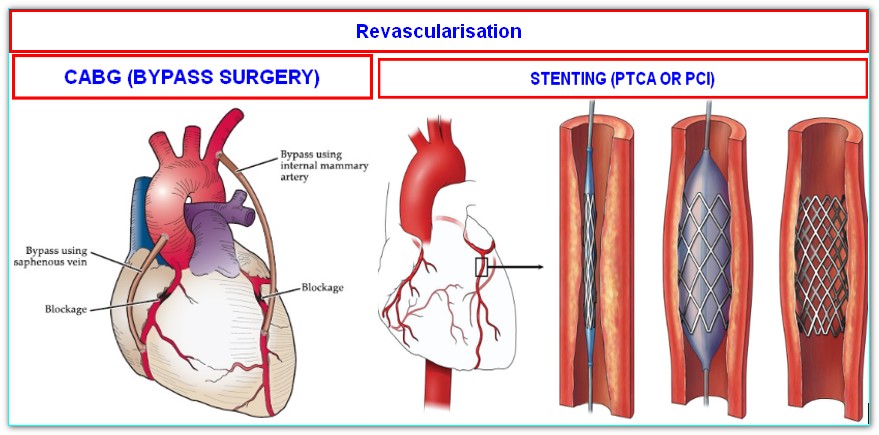If you have been faced with the question “bypass or angioplasty”, either for a loved one or for yourself, you are not alone. This is the commonest dilemma people encounter when diagnosed with a myocardial infarction or heart attack. Both are revascularisation techniques, that is, methods to allow blood flow to the heart muscle when there are one or more critical blocks in the blood vessels supplying the heart. However, there are significant differences between the two treatment modalities.
Important facts
While the healthcare team caring for you at the time of the heart attack usually decides on the best management modality based on your medical parameters, it is important for you as the receiver of the treatment to have a clear understanding of what a bypass means, what an angioplasty means, and what to expect in the long term.
To begin with, coronary artery bypass graft or CABG is an open-heart surgery wherein the blocked coronary blood vessels are circumvented or bypassed using healthy vessels from other parts of your body such as your legs or chest area. This alternate route or bypass then supplies the much-needed blood to the heart muscle. Minimally invasive cardiac surgery or MICS is a newer treatment modality in which instead of opening up the chest to access the heart the surgeon performs the bypass surgery through small key-holes in the chest wall using thoracoscopy device. The recovery time is lesser for MICS approach than the conventional approach but only certain patients are eligible for this type of surgery.
Angioplasty, on the other hand, is a non-surgical procedure in which the coronaries are accessed via the peripheral arteries, that is, arteries in our hands and legs. The access points are either the groin or the wrist. A stent is a thin device that is inserted into the artery in our groin or wrist that goes all the way to the heart and to the blocked part of the coronary artery and stays there to allow blood to flow through it. This is an interventional procedure and not a surgery, therefore there are very few complications and the recovery is faster but again it is not suitable for all patients.
Of late, hybrid coronary revascularization is also being performed where minimally invasive coronary bypass surgery and angioplasty with stenting are performed in the same patient when multiple blocks are present.
The major criteria taken into consideration when choosing the revascularisation procedure are:
- Number of blocks
- Severity of blocks
- Location of blocks
- Known diabetic or not
- Other comorbidities like kidney failure, chronic lung disease etc.

Better outcomes
The team of doctors treating you will make the decision about what is the best management for you after considering all the relevant factors. Coronary revascularization is a life-saving procedure and whether bypass or angioplasty is chosen, it is important to adhere to the medications prescribed and to follow a cardiac rehabilitation program for better outcomes. Modifying the risk factors, attending the follow-ups regularly and leading a heart-healthy lifestyle are the best ways to prevent occurrence of complications and repeated hospitalizations.
Pandemic restrictions
Due to the ongoing pandemic, there is a doubt in people’s mind about whether it is safe to see the doctor and to get investigated or if should be postponed.
IF YOU THINK IT IS AN EMERGENCY DO NOT DELAY SEEKING MEDICAL HELP.
Tele-consultation is a safe alternative for non-emergency medical conditions but if you suspect a heart attack, stroke or other medical and surgical emergencies, you should report to the casualty at the earliest, taking all COVID-19 precautions.